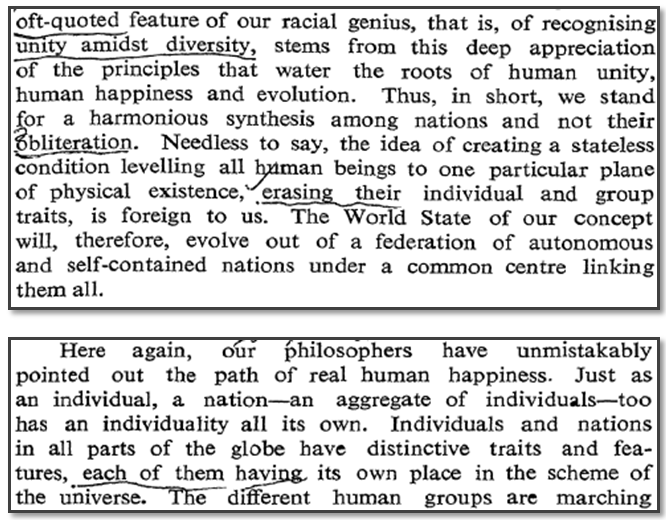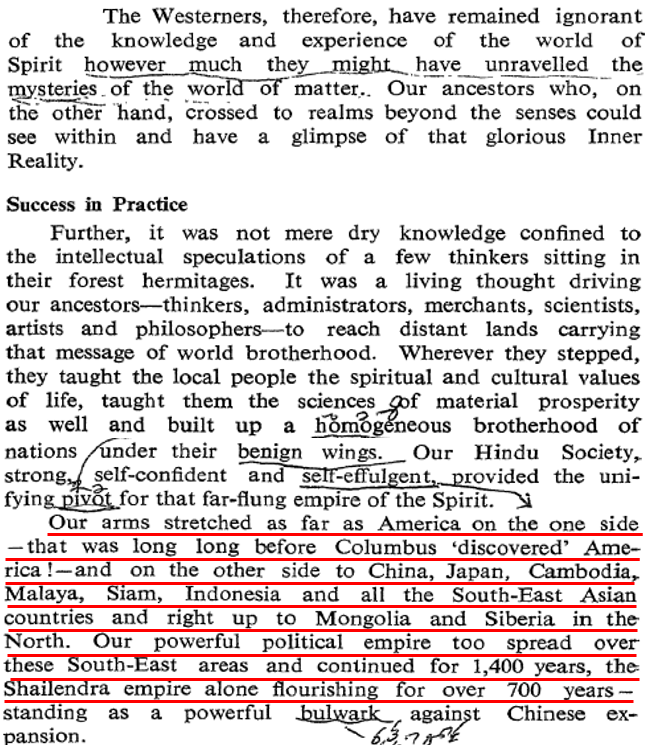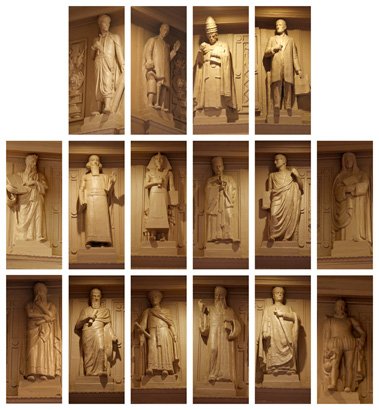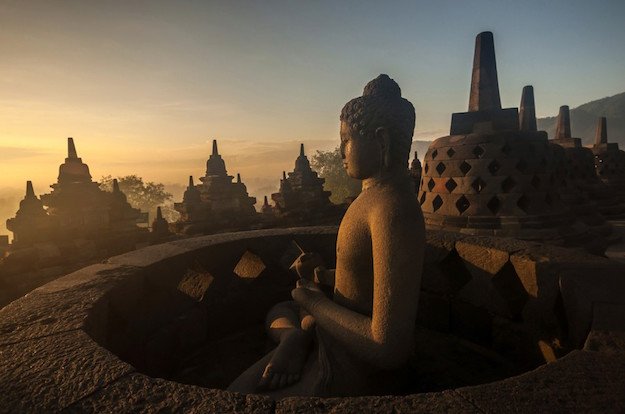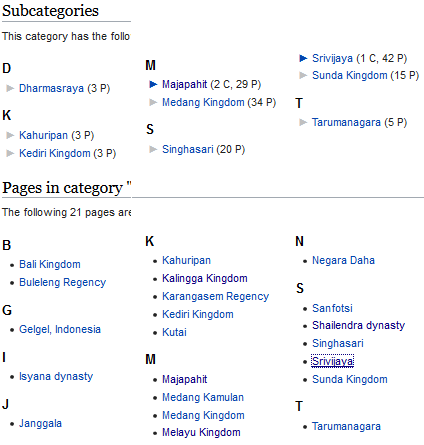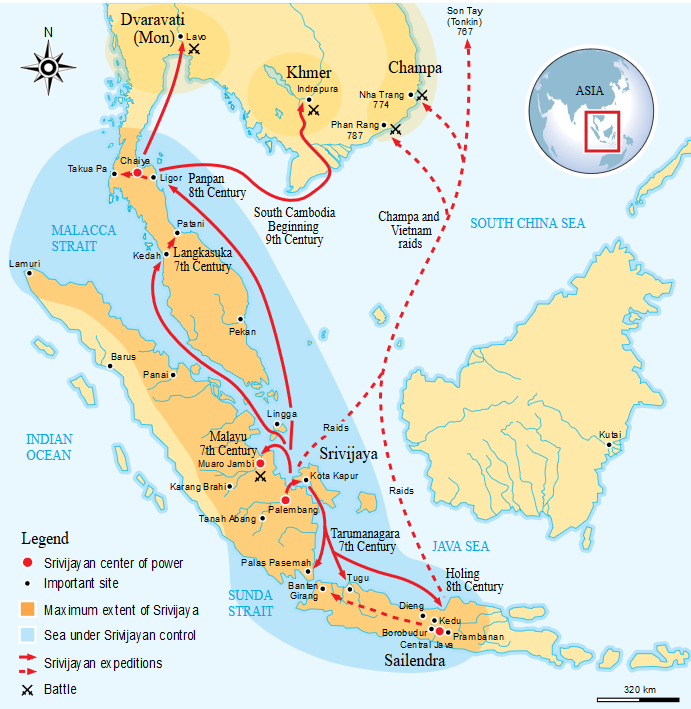Recently decided to read Golwalkar/Savarkar& #39;s writings from cover to cover. Not having had the benefit of a Shakha education and with a nation-wide NRC looming, thought it& #39;d be prudent to start NOW. Began with Golwalkar& #39;s "Bunch of Thoughts" & ran into problems from the get-go.
The 1st chapter, World Mission, discusses whether the "task of re-organizing the national life of Hindus taken up by the RSS [is] in conformity with the spirit of world unity and human good."
He says Hindu seers thought of universal unity & welfare since time immemorial, long before modern thinkers came up with it. Par for the course, since most propaganda claims global primacy for itself, its adherents & their progenitors.
"Internationalism" / "Synthesis of National Aspirations & World Welfare" failed to get world unity, he says, citing Soviet Communism, League of Nations & UNO as case studies. Communism failed bcos Russian Nationalism trumped it & LoN/UN, due to unbridled national ambition.
He says ancient Hindu philosophers have the answer. The One Great Common Principle... call it god, soul, truth, what you will. This is the Hindu single global human identity for the happiness of which Hindu individuals strive.
He then says Hindu philosophers realized that humans might have a common identity but are each unique. Similarly all nations have 1 identity but each is unique. So Hindu "unity in diversity" solution is a federation of autonomous nations with a common centre.
So, over the course of a few paras, he calls the League & UNO failures, and then furnishes exactly the same concept as the unique Hindu answer! His claim WRT Communism is simpler to refute: it never sought a unified world government, Comintern grandstanding in 1919-25 aside.
Other issues in around 10 pages of reading are less philosophical and more mundane. Here he trashes the westerners and says Hindu travellers taught everyone wherever they went and Hindu society was the pivot of a far flung spiritual empire. Note factual claims here.
"Locals" adored this political empire apparently. They yearned to die on Gangetic banks. No blood shed in Hindu conquest. Even today they are proud of Hindu heritage even if Muslims now. Also makes a factual claim about a Manu statue with an inscription saying "First, foremost.."
There are problems with virtually every claim made. Remember this is from the late 1960s - we had reasonably good info sources. We can dismiss the 1st claim - Hindus in America before Columbus - out of hand. Can& #39;t imagine where he got it from.
The Filipino Manu statue took 2 days of checking to locate. No amount of googling threw up a link between Manu & the nation (which has Malay heritage and hence a connection to Hinduism). Most hits are all Indian blogs and sites stating virtually the same thing Golwalkar does.
One blog talked of the Senate building as the location of the statue. That led finally to this info: when they built the Congress building in the 1920s, sculptor Isabelo Tampinco executed an entablature, of great lawmakers & moralists from across the world, for it.
Kalantiaw, Apolinario Mabini, Pope Leo XIII, Woodrow Wilson, Moses, Hammurabi, Rameses the Great, Li Si, Augustus, Blackstone, Solon, Averroes, Justinian, Manu, Charlemagne & Grotius. The only distinctive thing abt Manu: all others are historical figures.
https://www.nationalmuseum.gov.ph/nationalmuseumbeta/Museums%20and%20Branches/National1-Level3.html">https://www.nationalmuseum.gov.ph/nationalm...
https://www.nationalmuseum.gov.ph/nationalmuseumbeta/Museums%20and%20Branches/National1-Level3.html">https://www.nationalmuseum.gov.ph/nationalm...
Next claim is a political Hindu empire across South-east Asia for 1400 yrs. Disingenuous to say the least. At no point in ancient or medieval history did the sub-continent & SE Asia constitute 1 entity. In fact, we had scores of splintered kingdoms often at war with each other.
He claims the Shailendra Empire flourished for 700 years. This is problematic in the inflated timeline that it sets up. Depending on which historian you ask, the Shailendras ruled Java between 650-717 CE or 650-1025 CE.
The dispute - some historians say the Shailendras ceased in 717 CE, followed by the Sanjayas until 1025 CE. The Shailendras were builders of famous Buddhist monuments, including the Borobudur complex. Initially Saivite Hindus though.
photo from http://adventures-abroad.com"> http://adventures-abroad.com
photo from http://adventures-abroad.com"> http://adventures-abroad.com
1st/early 2nd m SE Asia had myriads of dynasties, confusing us with alternating marital alliances & warring one-upmanship. A partial Hindu-Buddhist Indonesian kingdoms list off of Wikipedia (others in mainland SE Asia - Angkor, Champa, Dvaravati, Haripunjaya...):
Golwalkar might have meant Srivijaya, the more dominant monarchy based in Sumatra, but even they lasted only around 400 years.
So he lumps SE Asian city-states with contemporary sub-continent to posit a unified empire over an inflated period. Can& #39;t imagine why they fought each other constantly. All this packed into the 1st 10 pages, to proclaim past hegemony in thought & geopolitical might is troubling.
Scarily echoed in proclamations today. Only possible inference: current dispensation& #39;s version of past is Golwalkarian, despite recent disavowals of his thought. Their future actions, influenced by this version, are meant to reclaim mythical global supremacy; this will hurt us.
Finally, if this is the amount of fact-checking needed for 10 pages, am going to find it difficult to finish this book, let alone the entire bibliography of both of them.

 Read on Twitter
Read on Twitter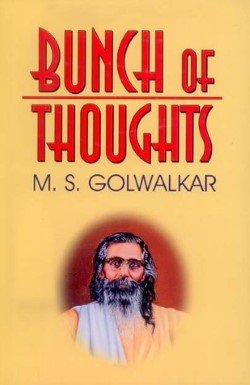
![The 1st chapter, World Mission, discusses whether the "task of re-organizing the national life of Hindus taken up by the RSS [is] in conformity with the spirit of world unity and human good." The 1st chapter, World Mission, discusses whether the "task of re-organizing the national life of Hindus taken up by the RSS [is] in conformity with the spirit of world unity and human good."](https://pbs.twimg.com/media/EE03RiIUcAUK0uA.png)


